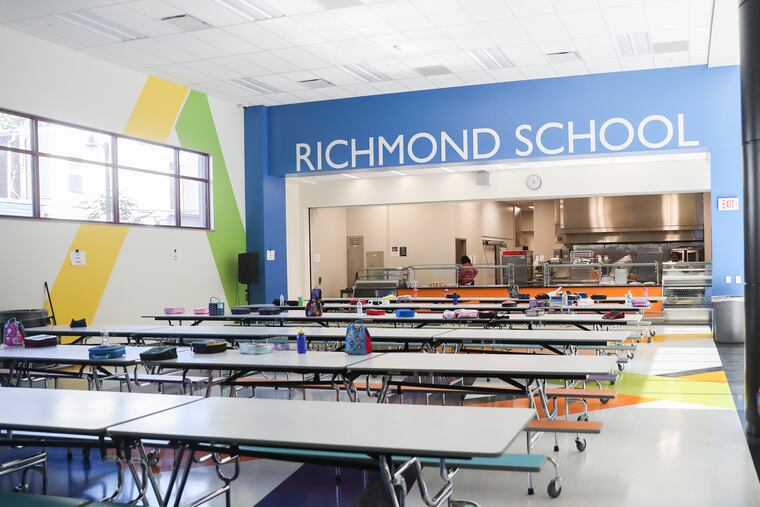$18 million in upgrades debuted for this Philly elementary school
Richmond Elementary now has five new classrooms, upgraded electricity, a new paint job, LED lighting, and, for the first time in its 99-year-history, a separate cafeteria.

What have $18 million in building improvements meant to Richmond Elementary School?
Everything, said principal Susan Rozanski.
The school — at 2900 Belgrade St. in the city’s Port Richmond section — now has five new classrooms, including a designated art room and computer lab, upgraded electricity, a new paint job, LED lighting, and, for the first time in its 99-year history, a separate cafeteria with a full-service kitchen. (In the past, a multipurpose room doubled as gym and lunchroom, and no fresh food was able to be made on site because of a lack of kitchen.)
“I feel like the vibe in the building is definitely very positive, very happy,” said Rozanski. “It’s made things so much brighter.”
The Richmond project also included the removal of lead paint and abatement of all known asbestos materials; bathroom upgrades; masonry repairs and a new fire alarm system.
Rozanski welcomed Superintendent Tony B. Watlington Sr. and other visitors Tuesday to formally mark the opening of the Richmond addition, showing off the upgrades and new spaces.
Later this week, the district will break ground on a new building for Cassidy Elementary, at 65th and Lansdowne in West Philadelphia. The $30 million project is expected to be completed for a fall 2024 opening.
Cassidy will have 20 classrooms, two music rooms, an art room, small group rooms, three special education rooms, and “21st-century learning environments,” district officials said, like collaborative hub areas and space for library stacks and technology.
The new Cassidy building replaces a structure built in 1924 that drew attention for widespread problems, from backed-up sewage and flaking paint to mold and damaged asbestos. In 2017, Cassidy fourth graders wrote to State Sen. Vincent Hughes (D., Phila) asking for help for their school.
“Every day I go to school, I feel like I’m in a prison or a junkyard,” student Chelsea Mungo, then 10, wrote to Hughes.
Though Richmond and Cassidy are getting upgrades, significant facilities issues remain districtwide. In 2017, the district estimated it had $4.5 billion in unmet capital needs. An updated capital planning process is underway. At its conclusion, the district is expected to make decisions about possible school closings, consolidations, new buildings, and changes to infrastructure.